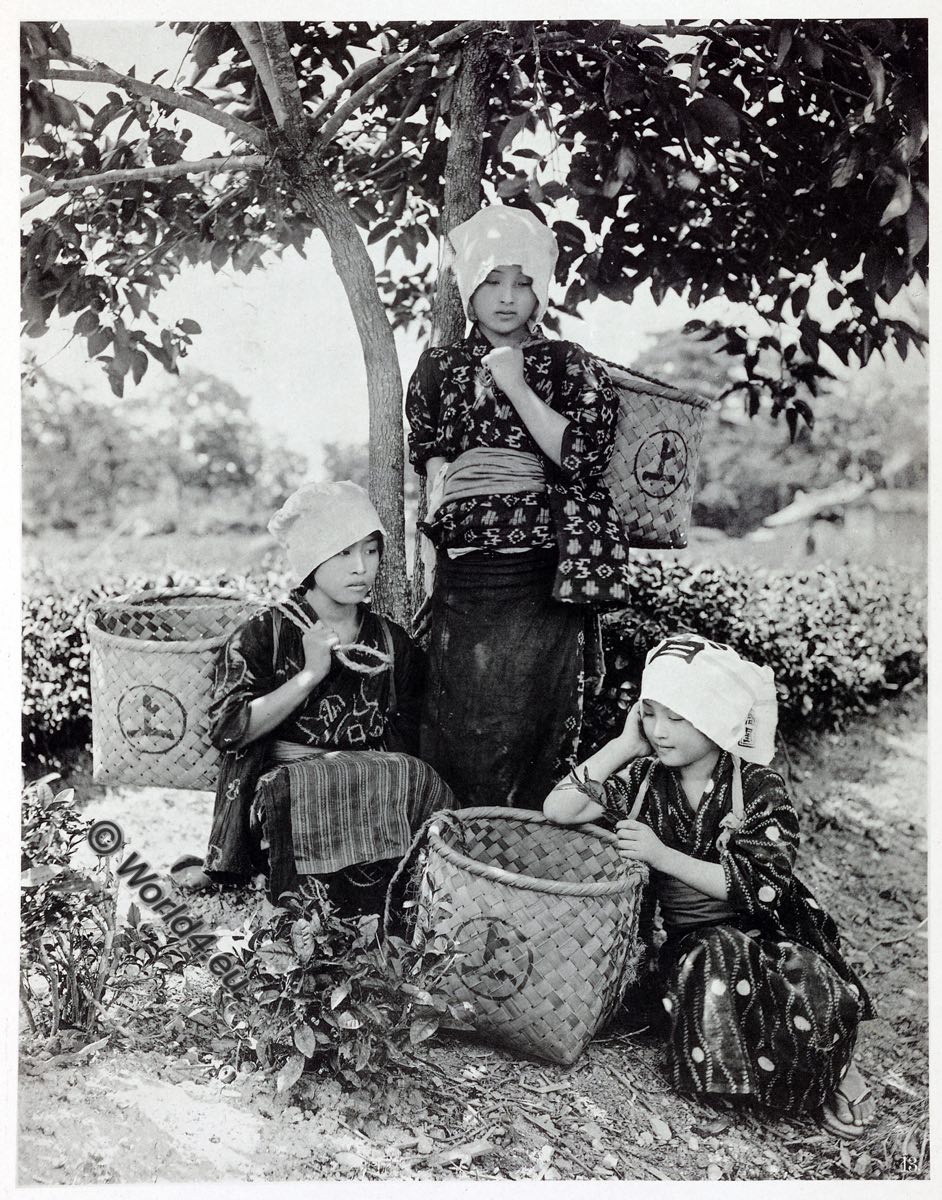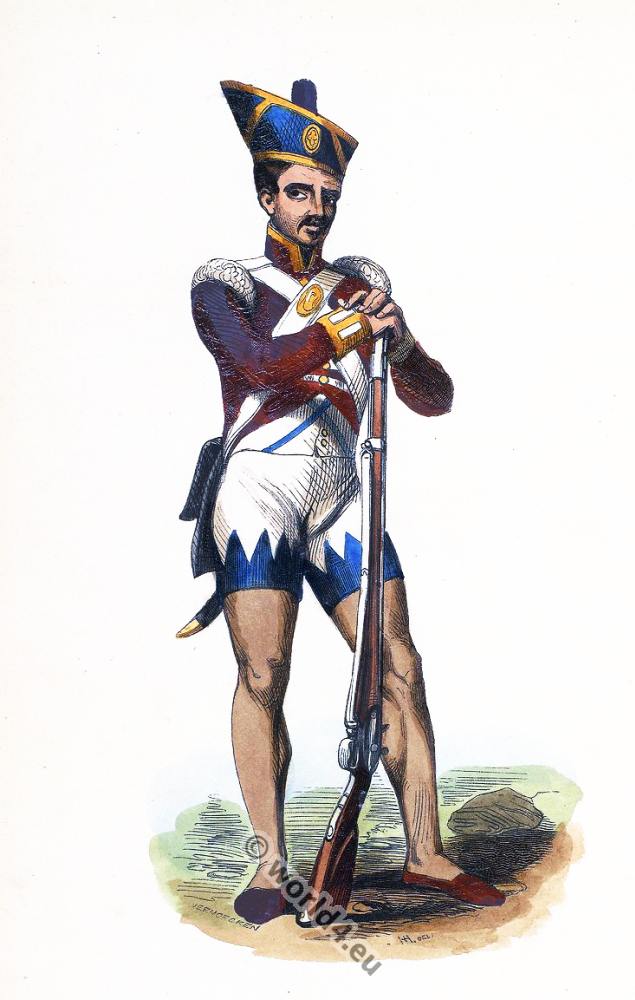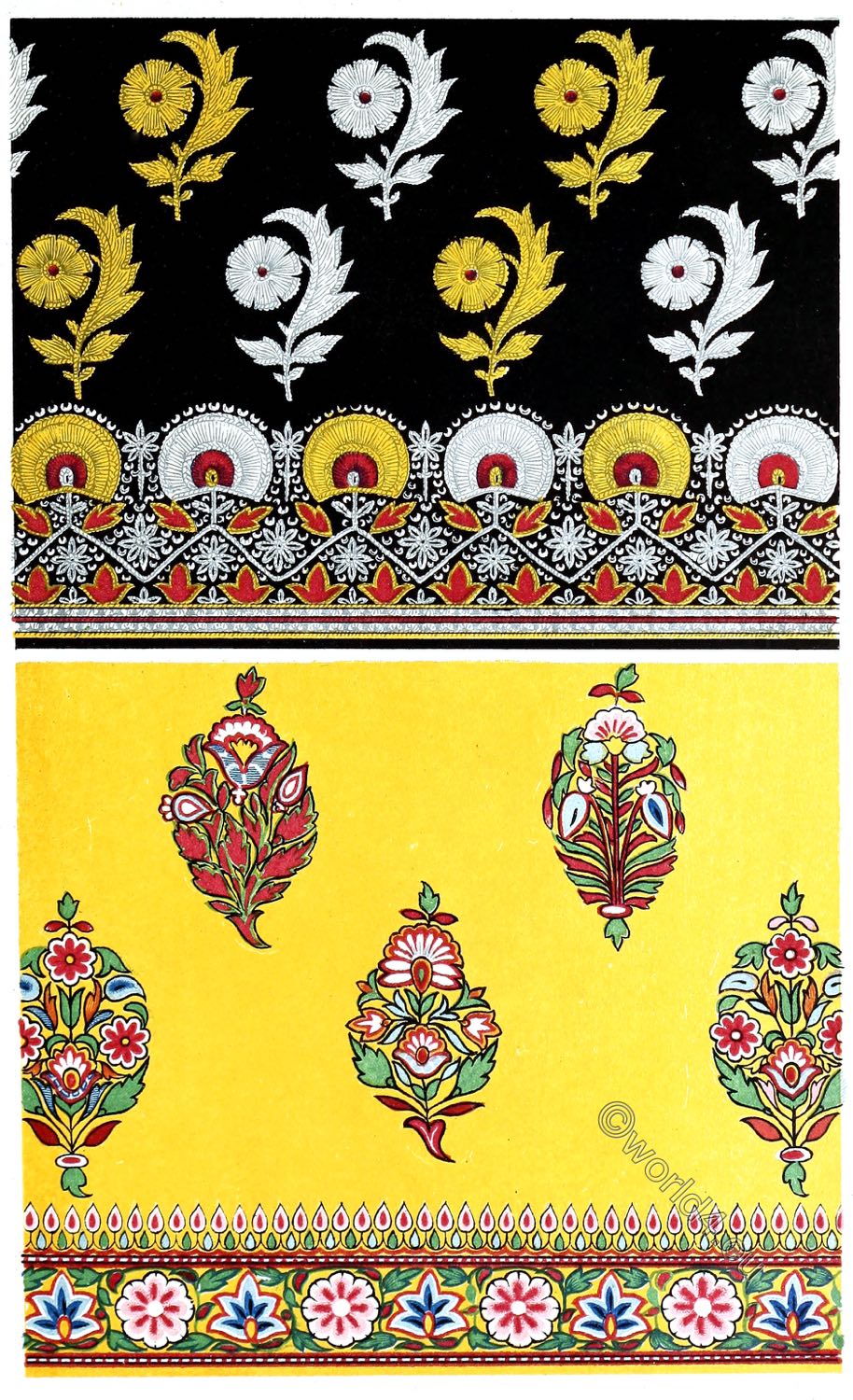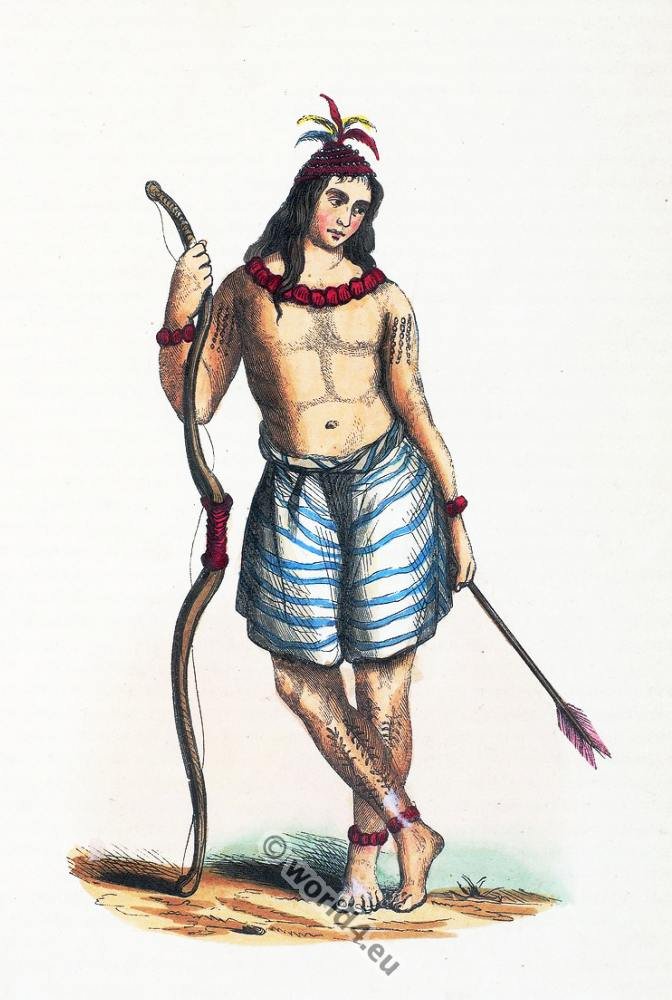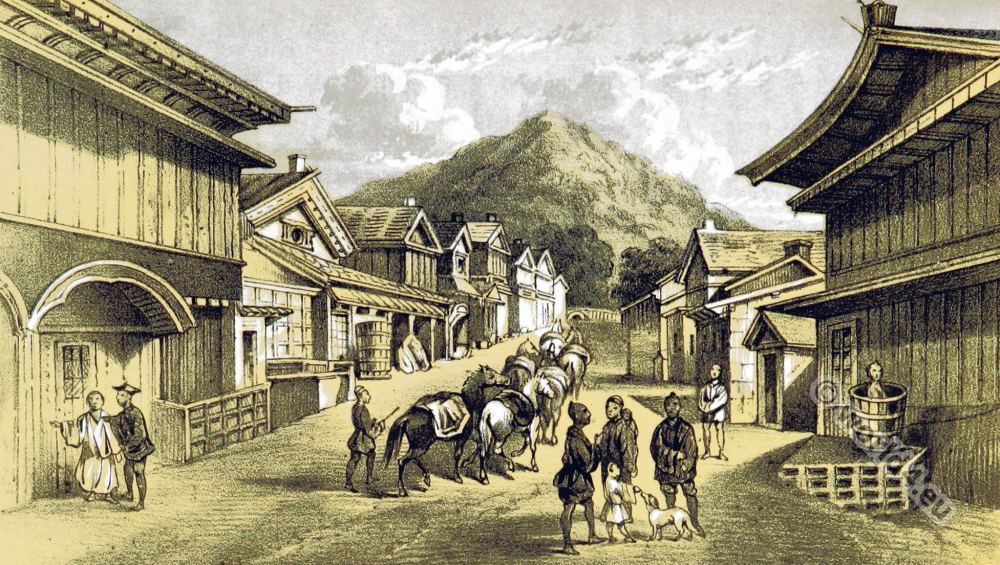
Luxurious Fabrics
by George Ashdown Audsley.
RICH fabrics, woven chiefly of silk, such as those which are represented in the present Plate, have from time immemorial been much appreciated by the higher orders of Japan, and used for articles of dress, especially for the obi, or girdle, worn by the ladies.
The fabrics here illustrated show two styles of artistic treatment; the ground of one being uniformly purple-black, produced by the silk warp ; while the ground of the other is in bands of different colours, produced, with the exception of those in black, by the silk threads of the woof. The black portions throughout the design are derived from the warp. The surface of the coloured patterns present minute diapers, formed by the regular manner in which the threads are caught by slender filaments of the warp but; very little durability is obtained by the adoption of this method of weaving, and the silk woof soon becomes frayed and detached from the groundwork.
Fans are very favourite decorative devices amongst Japanese artists will be observed that they are freely introduced in both the designs in this Plate. In one case they form the pattern almost entirely; whilst in the other, they are associated with overlapping square and round medallions, filled with floral and conventional devices. The latter pattern is represented one-third the real size and the former about one-fourth.
In the possession of Sir Rutherford Alcock, K C. B.
Source: The ornamental arts of Japan by George Ashdown Audsley. Lithographer: W. Greve, Berlin. Published: Lemercier & cie., Paris 1882.



